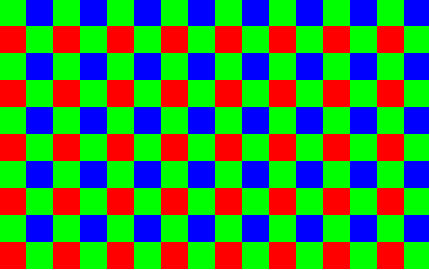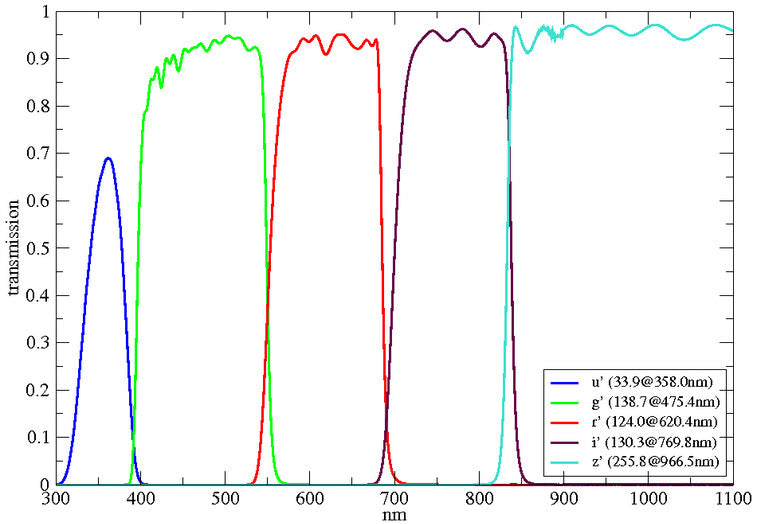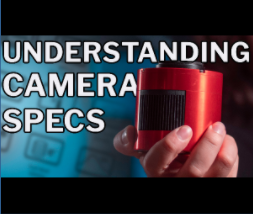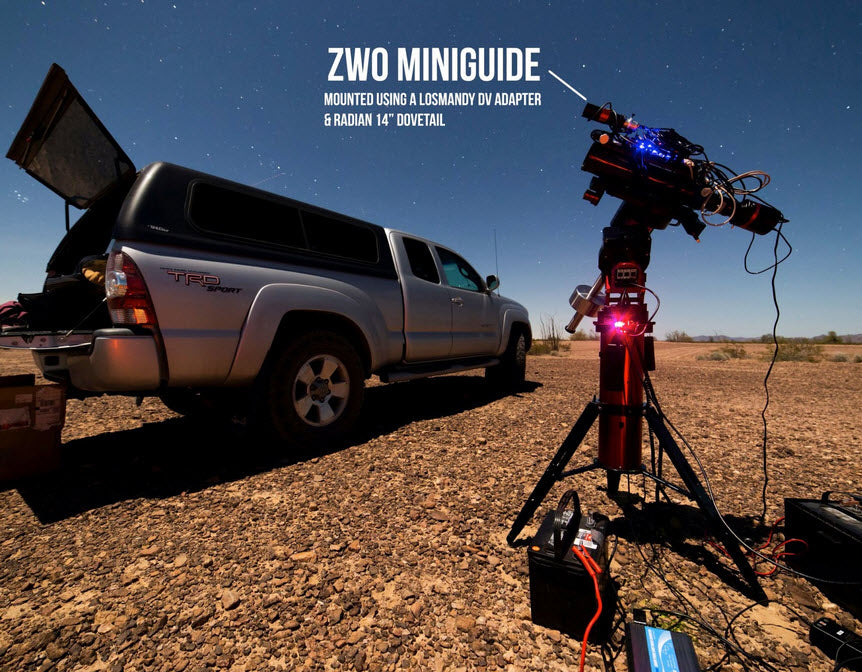Deep Sky Astrophotography Filters Explained
By Bray Falls, OPT Affiliate
What is an Astrophotography Filter?
Whether or not you are an astronomer, you likely already use filters on a daily basis. You’ll find them in places like your coffee machine, your AC system, or sunglasses. To put it simply, a filter is a device that rejects a signal we don’t want and passes a signal that we do want. For example, we wish to block coffee grounds, but we would also like good coffee to pass through to our pot. In astronomy, we want to pass wanted light into our pots (detectors) and reject unwanted light. This creates an important question, what light is wanted and what light is unwanted? How do we decide?
The Electromagnetic Spectrum
Without diving into too much physics, light behaves as both a wave and a particle. A wave can be characterized by its wavelength or by its frequency. The frequency of light waves can take on a very large range, and we classify that range with the electromagnetic spectrum. This spectrum encompasses many different kinds of light, ranging from gamma rays to radio waves. Radio waves have a very low frequency (think slow vibrations), while gamma rays have a very high frequency (think fast vibrations). The light that most amateur astronomers are interested in lies between these two extremes, in the visible to NIR range (400nm-900nm wavelength). The light that our eyes are capable of seeing lies within 400nm to 700nm (violet to red).
Astronomers will use this spectrum to decide what a filter will reject and what a filter will pass. There are many different interesting sections to the electromagnetic spectrum, and the parts you choose to look at will depend on what you are trying to observe and where you are trying to observe it from.
Objects in space emit light from the entire electromagnetic spectrum, and scientists will study objects in every wavelength. For example, the ALMA observatory is used to study radio waves, and the Chandra space telescope is used to study X-rays. For cost and physics reasons, most amateur astronomers will be stuck observing within UV, visible, and NIR. However, there are still many interesting things to look at within this range.
RGB Imaging

The first and most obvious type of filtering we can do in astrophotography is natural light filters. Whether or not you use a one-shot color or monochrome camera, you are using RGB filters. In the case of an OSC camera, each pixel in the camera has its own color filter placed over it arranged in a Bayer matrix. The Bayer matrix pattern usually follows “RGGBRGGB…,” this pattern will repeat for every pixel in the sensor.

After data is collected, it is ‘debayered’ to produce a color image, with wavelengths ranging from 400nm to 700nm (natural light). In the case of a monochrome camera, we use discrete filters for red, green, and blue, which cover the whole sensor. Later in processing images from each filter are combined to produce a color image.
Each red, green, and blue filter has its own bandpass. A bandpass simply means the set range of frequencies the filter allows through. We can understand the bandpass and what a filter does by looking at a transmission curve.

Here is the transmission curve for a Chroma red filter. The Y-axis describes percent transmission, or how much light of a particular wavelength we decide to let through. The X-axis describes the wavelengths. For a red filter, we can see that it blocks every kind of light, except within the range of 575nm to 725nm. This makes sense since if we intend to look at red light, we should reject all other types of light that don’t fall within the range of red. Take note here that we have a bandpass of around 250nm.

These are the transmission curves for Chroma RGB and L filters. Again we can see the color filters cover their respective ranges, 400-500nm for blue, 500 to 600nm for green, and 600 to 700nm for red. We can also see a light blue curve representing a luminance filter, which covers the whole range of visible light from 400 to 700nm. Keep note of this range. Any light below around 400nm falls under UV, and any light above around 725nm falls under NIR-IR. If we want to look at an object in natural light (how our eyes would see it) we need to be in this range.
Now that we understand how to filter for natural visible light, what kind of objects can we observe with it, and what are its limitations? The good news is that almost every object in the night sky: galaxies, nebulae, star clusters, planets, and the moon look good in visible light. LRGB filters are an important part of all astrophotography setups. The problem with observing in LRGB is that it is heavily location-dependent.
Light Pollution Filters
Light pollution is a pervasive problem for astrophotography, especially for people trying to observe in LRGB. The best solution for light pollution is to escape it and drive to somewhere dark, however, this is not a feasible option for everyone. The next best option is to try and filter away the light pollution, with light pollution filters!
Light pollution comes from a variety of different light sources, like LED bulbs and sodium bulbs. Each of these light sources produces a specific emission curve:


Here we can see that sodium lamps are primarily yellow-green-orange, and have large spikes in those wavelengths. A light pollution filter simply seeks to block out these spikes, and let through everything else. Like the IDAS LPS filter:

Here in the transmission curve, you can clearly see transmission falls to zero percent near heavy light pollution sources. This is quite handy but there is a big problem to consider.
If the object we wish to image also emits light at the wavelengths of street lights, the light pollution filter will actually hurt us in our effort to capture an object. This is the case for most LRGB targets except for emission nebulae.
So the bad news is light pollution filters cannot help you if you want to capture galaxies, dark nebulae, reflection nebulae, or star clusters from light polluted skies. For these object types, you will need to drive somewhere dark or try to punch through the light pollution with integration time. The good news is that these filters will really help with imaging emission nebulae (like the Lagoon Nebula or Orion Nebula). Emission nebulae may emit some light in the light pollution spectrum, but a large portion of their light will fall outside this range in narrowband emission lines.
Narrowband Filters
Narrowband emission lines are where things get really interesting with doing astrophotography. Since emission nebulae emit a large portion of their light at very specific frequencies of light, we could do without the entire spectrum of light, and just focus on the key wavelengths that matter most. This is where narrowband filters come into play. These are filters with one (or several) short bandpasses centered about the most important frequencies of light.


Here is a figure which shows the emission spectra for Hydrogen, also called the Balmer Series. This shows the key frequencies of light where hydrogen emits light when energized in an emission nebula. The most emission line is at 656.28nm in the deep red, also known as Hydrogen-alpha. There are several other key emission lines for other gasses such as the Sulfur-ii emission (671.6nm & 673.1nm) and Oxygen-iii (500.7nm & 495.9nm). These three emissions are the most common ones that are imaged by amateurs and make up the classic ‘Hubble Palette’ style narrowband image (Sii-Ha-Oiii).

Remember how in the LRGB section we noted that the filter bandpass was on the order of hundreds of nanometers? Well, that is certainly not the case with narrowband filters. Narrowband filters range anywhere between 3nm to about 30nm of bandpass around one emission line depending on the filter. You may be inclined to think that more bandpass equals more light, which equals a better image, but this is wrong. The goal of the narrowband filter is to only look at the narrow band of light, and allowing any other kind of light into the sensor will actually hurt the contrast (and signal to noise ratio) of the final image. The best narrowband filters will typically have bandpasses of 3nm.
One of the beautiful side effects of only filtering for specific types of light with narrowband filters is that it means the effects of light pollution are very little. Narrowband imaging is the ultimate way to image from a backyard. However, there are a couple of caveats, since narrowband filters reject most of the spectrum they are not great for imaging white light targets like galaxies, clusters, dark nebula, or reflection nebula. They are also not immune to sources of light pollution which are white light (emit light at all parts of the visible spectrum), such as the moon and some LED lights. The Oxygen-iii filter is particularly susceptible to light pollution from white light sources since it is centered in the blue-green part of the spectrum, whereas Hydrogen-alpha and Sulfur-ii are centered in deep-red parts of the spectrum.

The narrowband filters I’ve discussed at this point are all single bandpass filters, which means they are intended for use on monochrome cameras for maximum efficiency on one emission line. But it is still possible to do narrowband on color cameras. For example, you could use a filter such as the Triad Ultra Quad-Band filter, which has multiple bandpasses around several key frequencies of light.
This table shows the frequencies of light which the Triad Ultra passes, and their respective bandpass and transmission percentage. Short bandpasses will allow for high contrast, and the inclusion of Hydrogen-beta and Oxygen-iii in the filter will allow good usage of the blue and green pixels within a color sensor. With special processing, this will allow you to produce a classic-looking narrowband image with a color sensor. You should keep in mind that the red pixels in a color camera cannot tell the difference between Hydrogen-alpha and Sulfur-ii, because they are both red. The same goes for Hydrogen-beta and Oxygen-iii with the blue and green pixels.
The other thing to consider is that if you use a Hydrogen-alpha filter (or another single-pass narrowband filter) on a color camera, 75% of the pixels on your camera will not be collecting any light, since the green and blue pixels are not capable of capturing red Hydrogen-alpha. To isolate a specific emission line, and to image it with maximum efficiency requires a monochrome camera.
Keep in mind the wavelengths that these narrowband filters are still centered on wavelengths within the visible spectrum 300nm to 750nm.
What about filters for things outside the visible spectrum?
All the types of filters we’ve discussed up to this point have still been within the visible range. There are however some deep-sky filters that deal with light outside of the visible spectrum. These will usually be in the form of photometric filters, which are typically used for scientific applications to do photometry (study the intensity of light). The photometric filter range covers many different bandpasses, they go by the names u’-g’-r’-i’-z’. The i’ and z’ filters are both outside the visible range between 750nm to 1100nm, this falls under the NIR range.

If you want to do NIR astrophotography, there are a couple of things to think about. First, you should consider how the quantum efficiency (% of incident photons that are captured) of your camera is at NIR wavelengths. Most DSO cameras will have relatively poor QE at NIR wavelengths, so you should consider the “I” filter for NIR, because it covers the range nearest to red where your camera will be most efficient. You should also consider that glass (like in a refractor) is semi-opaque in NIR, and also that most refractors are not designed to focus light at these wavelengths. You can avoid these issues by using a telescope with mostly reflective elements like a Newtownian Reflector andRitchey Chretien. The effect you get from imaging in these wavelengths is quite interesting if you are willing to go through the effort!
Summary of Astrophotography Filters
So to encapsulate all of that information about when and where each type of filter is useful, here is a table to reference (click to enlarge):














Paul Laughlin
September 19, 2021
Very informative . I will try to apply what I’ve learned.
Thanks keep up the good work
Paul